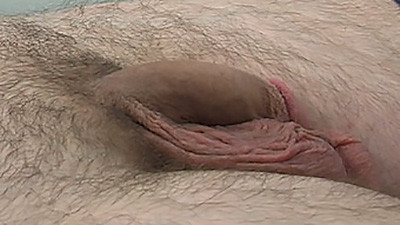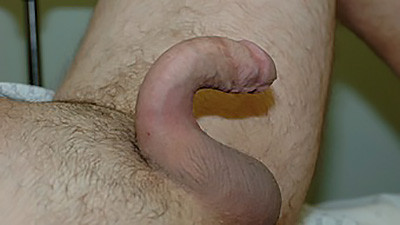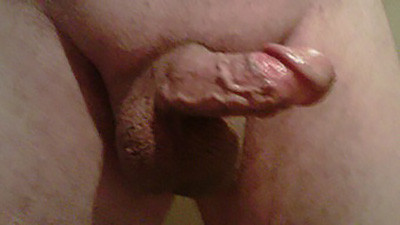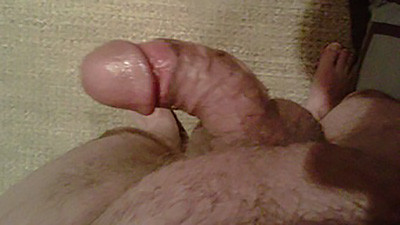Peyronie’s disease symptoms include penile curvature, but not all cases of penile curvature are caused by Peyronie’s disease. That is why at the Center for Reconstructive Urology we always complete a thorough evaluation before making a Peyronie’s disease diagnosis.
The first step to making a Peyronie’s disease diagnosis is a comprehensive evaluation, where we look at the complete medical history and perform a physical exam of all patients referred for penile curvature. Since penile curvature only presents itself when the penis is erect, generally the actual curvature cannot be observed during a physical examination since the penis is flaccid. Therefore, we encourage our patients to bring digital pictures of their erect penis, with photos taken from several different angles. These Peyronie’s disease pictures provide clear documentation of the extent of curvature, allowing for a more accurate diagnosis.
Below are a few examples of Peyronie’s disease pictures sent by patients with disabling penile curvature. Although the majority of patients with penile curvature caused by Peyronie’s Disease have upward curvature, these patient’s exhibit a full range of the different types of penile curvature when erect.

Flaccid Penis

Erect Penis with downward curvature from Peyronie’s Disease

Lateral (to the side) and upward bend

Another view of disabling curvature
There are a few different circumstances in which men exhibit significant penile curvature that is not caused by Peyronie’s disease. Young men reporting that their curvature has been occurring their whole life are often referred to the Center for Reconstructive Urology, expecting a Peyronie’s disease diagnosis. However, this is not Peyronie’s Disease, but rather a disorder called Congenital Penile Curvature in which the patient is born with a penis that is longer on one side than the other. The curvature is often to the side, but it can also be upward or downward. The penis of a man with Congenital Penile Curvature is usually very adequate in length and shows no sign of plaque or scarring.
There are two other scenarios in which penile curvature is generally not Peyronie’s Disease. Curvature is usually not caused by Peyronie’s disease if the patient has a history of hypospadias and the penile curvature is downward, or if the patient is diagnosed with epispadias (a birth defect that affects the top of the penis) and exhibits upward curvature.
It is especially important for men with penile curvature to have a clear diagnosis before pursuing any treatment. No matter what is the cause of the bent penis, the only way to straighten the penis is to make the long side shorter or the short side longer. For all causes of curvature, we can accomplish correction of penile curvature with surgery. Men with Peyronie’s Disease often want to pursue non-surgical treatment options before considering surgery, even when these options do not have proven efficacy. However, when the bent penis is caused by congenital curvature, the non-surgical Peyronie’s Disease treatment options directed at treating penile plaque and scarring are clearly of no value as there is not plaque or scarring with congenital penile curvature. This is an excellent example of why the first step, prior to consideration of treatment (such as remedies promoted on the Internet), should be an evaluation by a specialist.
In contrast to a bent or curved penis associated with an abnormality at birth, Peyronie’s Disease is an acquired condition. That means that the erect penis was straight for years, and then at some point during adulthood, curvature developed. Peyronie’s disease symptoms are characterized by an immature and mature phase.
Immature Unstable Phase of Peyronie’s Disease
The immature phase is when the patient first develops a bent penis and other Peyronie’s disease symptoms. The affected tunica albuginea first becomes inflamed, causing this area under the skin along the top of the penis to develop plaque. This thickening may be tender to the touch and is often mistaken for an infection, penile cancer, or a sexually transmitted disease. Often, but not always, patients can also have pain with erections. While inflammation associated with sports injuries can resolve in just a few weeks, the inflammation caused by the initial active immature phase can last over 12 months.
Mature Stable Phase of Peyronie’s Disease
Eventually, the acute inflammation subsides, and any pain generally resolves. During the mature phase, it is also possible that any penile curvature that develops may resolve. However, as the disease progresses and the scar becomes more dense, in many cases the bend and curve of the penis increases. Maturation of Peyronie’s disease symptoms can cause a change in the size and elasticity of the plaque, leading to a change in penile curvature. Stable mature Peyronie’s disease is characterized by little to no pain or change in penile curvature for at least 6 months.
It is not uncommon for men with Peyronie’s Disease to develop erectile dysfunction at some point. When men have both a crooked penis with erections and decreased rigidity (erectile dysfunction), we ask our patients: “If your penis were straight when erect, but the rigidity remains unchanged, would you be able to have satisfactory intercourse?”.
If the answer is “no”, then our initial efforts are directed towards the treatment of the erectile dysfunction as any treatment of the curvature should not be expected to improve rigidity. When we perform a surgery to correct penile curvature, the surgery only benefits the patient if he can then have an adequate erection because he does not have erectile dysfunction, or he has erectile dysfunction that is responsive to treatment.

